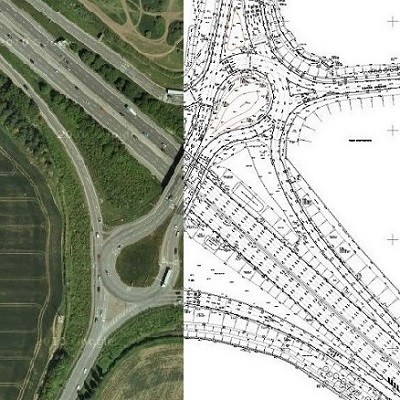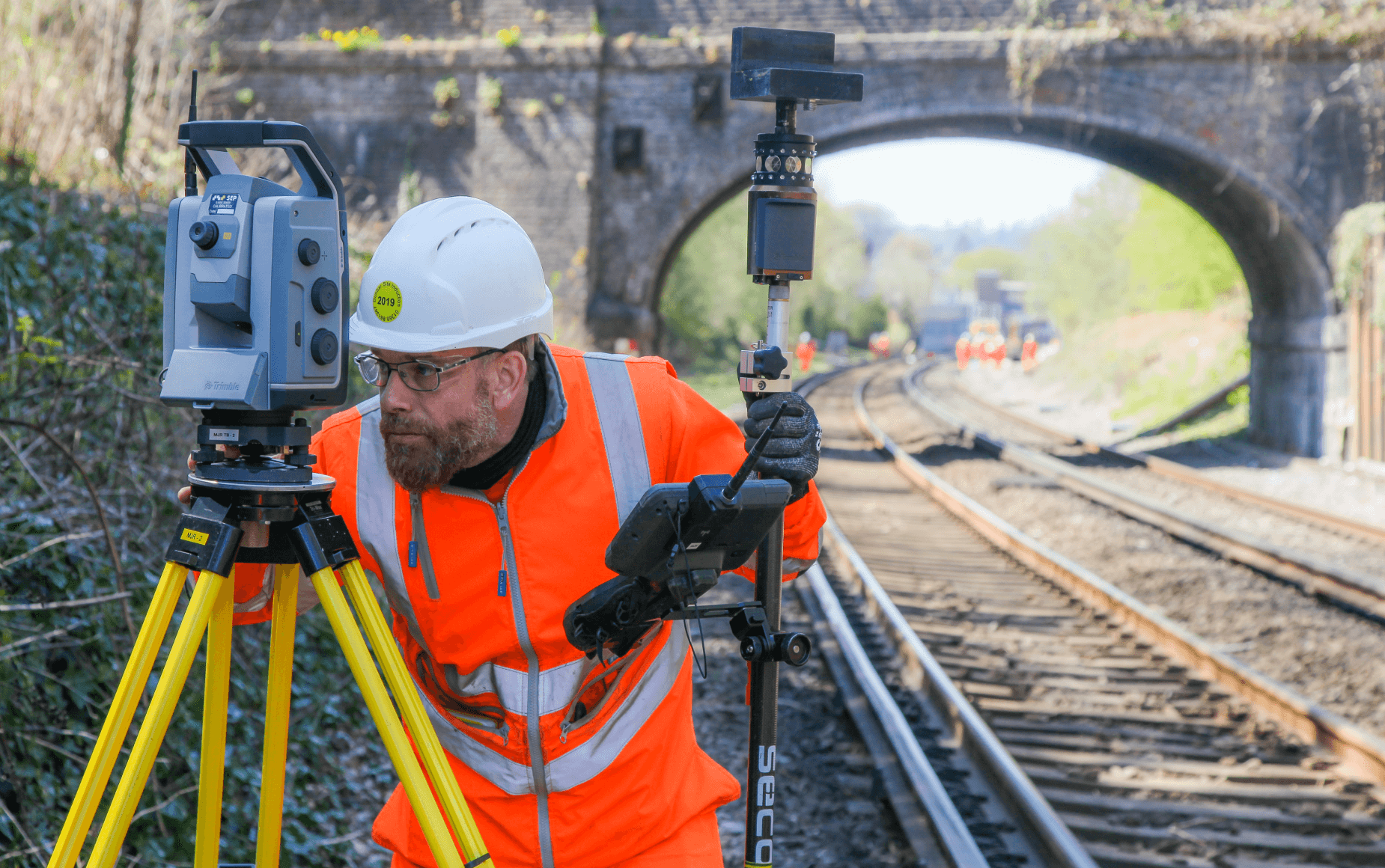Specialist Topographical Surveyors: Masters of Precision Mapping
Wiki Article
Charting the Program: Revolutionizing Surveying Solutions for Improved Environmental Conservation and Resource Administration
Are you interested in the future of evaluating services and their influence on environmental conservation and resource monitoring? Join us as we check out the important role of checking professionals in driving sustainable growth and conservation.The Relevance of High-Quality Checking in Environmental Conservation
Top quality surveying is essential for effective environmental conservation and resource monitoring. topographical surveyors. When it concerns safeguarding the atmosphere and handling our precious resources, accurate data is extremely important. With top quality surveying, you can collect specific information about the land, water bodies, and ecological communities, enabling you to make educated decisions and take ideal actionsBy utilizing premium checking strategies, you can precisely draw up the terrain, determine sensitive areas, and analyze the influence of human tasks. This information is necessary for developing reliable preservation strategies and applying sustainable source management strategies. With accurate surveying, you can check adjustments in the atmosphere in time, permitting you to track fads, recognize potential hazards, and take timely measures to alleviate any type of negative results.
Furthermore, high-grade surveying helps in the recognition and conservation of important natural environments and biodiversity hotspots (surveying and setting out). By mapping out these locations accurately, you can protect them from infringement and guarantee their long-lasting survival. In addition, exact surveying information aids in the recognition of environmentally sensitive locations, permitting the facility of secured zones and the execution of proper conservation measures
Advancements in Surveying Modern Technology for Resource Management
You can easily stay upgraded on the current developments in evaluating modern technology for much better source management. As innovation remains to advancement, so does the area of evaluating. New methods and tools are frequently being created to enhance the accuracy and effectiveness of checking procedures, eventually leading to a lot more effective resource management.One of the key advancements in checking technology is the use of drones. Drones equipped with high-resolution electronic cameras and LiDAR sensors can capture in-depth imagery and gather information in a portion of the time it would certainly take utilizing conventional surveying approaches.
An additional essential innovation is the usage of Geographic Information System (GIS) innovation. GIS permits surveyors to gather, assess, and imagine information in a spatial context. By integrating data from different resources, such as satellite imagery, airborne photos, and ground studies, GIS makes it possible for surveyors to produce in-depth maps and designs that can be made use of to make enlightened choices regarding source administration.
Integrating Geographic Details Equipment (GIS) in Surveying for Improved Preservation Initiatives
By integrating Geographic Information Solution (GIS) into your surveying practices, you can significantly boost your conservation initiatives. GIS enables you to collect, assess, and imagine spatial data, offering useful insights into the setting and sources. With GIS, you can accurately map and keep track of ecological communities, track changes gradually, and identify areas of high conservation worth.Among the key benefits of making use of GIS in surveying is the capability to make educated choices based on thorough data. By superimposing various layers of details, such as land use, greenery cover, and wildlife habitats, you can recognize locations that require immediate interest for preservation. land and topographical survey. This aids you prioritize your initiatives and designate resources a lot more successfully
GIS likewise enables you to work together and share information with various other stakeholders associated with conservation efforts. You can easily communicate your recommendations and findings to government companies, non-profit companies, and local neighborhoods, cultivating a cumulative strategy towards ecological security.

Leveraging Remote Picking Up Techniques for Environmental Tracking and Checking
Leveraging remote sensing techniques boosts the efficiency and accuracy of environmental tracking and evaluating. By utilizing sophisticated satellite imagery, aerial digital photography, and other remote sensing technologies, you can gather valuable information regarding the Earth's surface area and its features without physically being present in the field. This enables you to cover big areas swiftly and cost-effectively, saving both time and sources.With remote noticing, you can acquire high-resolution images of the atmosphere, enabling you to determine and keep track of adjustments in land cover, greenery health and wellness, and water bodies. This info is important for evaluating the effect of human tasks on communities and handling all-natural resources successfully. Additionally, remote sensing methods give useful insights right into climate patterns, permitting you to assess weather, screen temperature adjustments, and forecast natural catastrophes such as typhoons or wildfires.
Moreover, remote sensing can be made use of to check and detect contamination sources, track the spread of invasive varieties, and evaluate the high quality of air and water. By utilizing spectral evaluation, you can determine specific contaminants and their sources, helping to develop techniques for air pollution control and avoidance. This technology also plays a critical function in wildlife preservation, as it enables you to check pet environments, track migration patterns, and determine locations of high biodiversity.
The Function of Surveying Specialists in Sustainable Growth and Conservation
With visit the site remote picking up techniques, surveying specialists play an important function in advertising sustainable growth and conservation efforts. As an evaluating specialist, you are at the forefront of utilizing innovative technology to gather vital data concerning the environment. Through aerial and satellite images, LiDAR, and various other remote noticing devices, you are able to accumulate accurate and extensive information concerning land cover, greenery, water resources, and various other crucial all-natural attributes.
In collaboration with various other professionals, such as ecological researchers and policymakers, you add to the formula of sustainable advancement plans and conservation techniques. Your know-how helps in determining prospective conflicts between growth and preservation goals, making it possible for stakeholders to make informed decisions that stabilize economic growth with ecological protection.
Overall, as a surveying professional, you have a vital duty in advertising lasting development and preservation initiatives. Your skills in remote sensing and data evaluation are vital in providing the needed information and insights for efficient ecological management and conservation.
Conclusion
To conclude, surveying services play an important duty in boosting ecological conservation and source monitoring. By utilizing cutting-edge technologies such as geographical details systems (GIS) and remote sensing techniques, evaluating specialists can precisely collect information to support conservation efforts. Their proficiency is essential in determining and keeping an eye on environmental modifications, allowing sustainable advancement and efficient conservation strategies. With their dedication and dedication, checking experts contribute substantially to the preservation of our natural sources and the overall well-being of our planet (remote movement monitoring). Keep up the magnum opus!Are you interested in the future of checking services and their influence on ecological conservation and source management? Additionally, accurate checking information help in the identification of ecologically delicate areas, enabling for the establishment of safeguarded areas and the implementation of proper conservation measures.

In final thought, evaluating solutions play a crucial duty in boosting environmental preservation and resource administration. By utilizing innovative technologies such as geographical info systems (GIS) and remote noticing strategies, evaluating professionals can precisely collect information to sustain preservation initiatives.
Report this wiki page